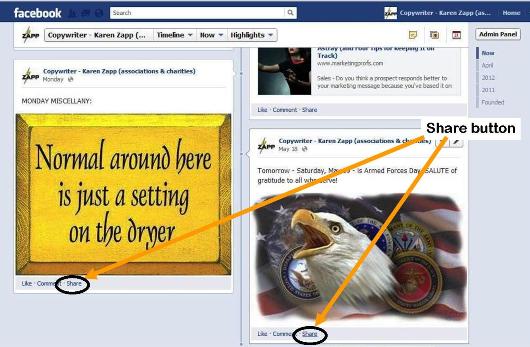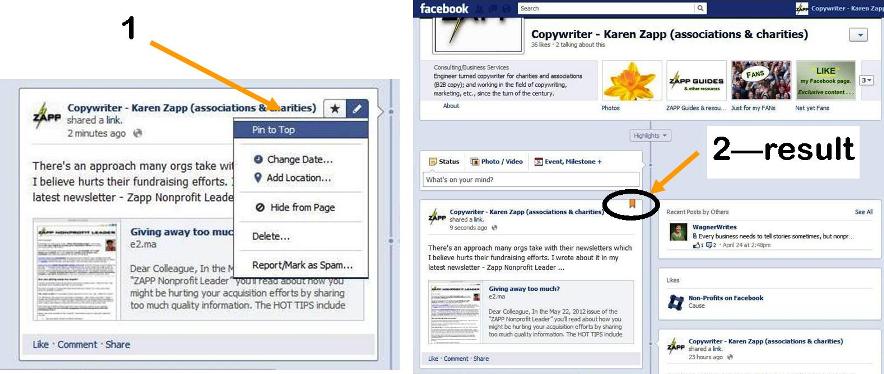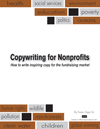The ultimate goal of all your nonprofit marketing is to raise money. And that money makes it possible for you to do great work helping people through charitable acts, or through your association.
Therefore, one way or the other you want your Facebook page to help raise money. It needs to “pay off” and make all your efforts of maintaining it worthwhile. First, what can you really expect from your fans?
It’s my opinion that Facebook and other social networks are MOST effective as acquisition and cultivation tools. Attract prospects . . . cultivate them over several weeks or months . . . and over time your cultivation strategy converts a significant portion to donors and members.
That’s definitely a pay off!
It’s also my opinion that you can’t expect to raise funds via social at anywhere near the same level as you can through integrated direct mail and email campaigns. To date, most nonprofits have the greatest success with short-lived (24 hours to a week or two in duration) projects with smaller dollar goals (e.g., $10K – 25K). Again, be strategic in choosing projects for promotion on Facebook.
That being said, how can you maximize Facebook ROI?
I watched a webinar last week by Mari Smith who is recognized as one of the genuine gurus of Facebook. She shared several tips on how to make your Facebook page produce a higher ROI. She wasn’t focused on nonprofit orgs, but the tips are just as valid.
Visibility is Mandatory
If fans don’t see your content . . . you won’t get any thing of value accomplished. Fans can’t LIKE, comment, share, donate, sign-up, or engage in any fashion if they never see your content.
And most of your content doesn’t get seen. In fact, on average only 16% of your content is seen by your fans. Some studies put the number as low as 3-6%.
In order to boost your ROI you need more people seeing more of your content. How do you do that? Here are 10 tips from Mari to answer that question:
-
Facebook wants you to run ads. And this could be worth testing for a specific campaign or event. Also know that you can control the budget and not spend more than you want.
-
Posting too often can hurt visibility. Test for your nonprofit. Start with once or twice a day. Oh, and don’t forget weekends!
-
Keep your content “on topic.” Also ask questions to prompt comments. This is because comments carry more weight than LIKEs in Facebook’s visibility formula (i.e., edgerank).
-
Include photos on 80-90% of your updates. Photos are a HUGE factor in getting your content max visibility.
-
Strive to keep your narrative to 160 characters or less. Yes, you can write updates with thousands of characters. But that works against your goal of maximum visibility for higher ROI.
-
Minimize using 3rd party apps to post updates (e.g., Hootsuite). Although using a 3rd party app does not hurt visibility, you won’t get the “share” button unless you include a photo with the update. And if your fans can’t share your content then this too hurts visibility.

-
Change your cover image regularly. Mari suggested as often as every few days! That surprised me. I also think that frequency is all but impossible for most nonprofits who don’t have staff dedicated solely to social media. But do try to change it once a quarter or so. And perhaps also have cover images for special events and even any holidays related to your org (e.g., faith-based charities can have dedicated cover images for Easter, Christmas, or Hanukkah).
- Use the “pin to top” feature which saves an update to the top of your stream for 7 days. It’s also a way for you to rotate content that’s a bit older back to the top. And you ought to pin something about any promotion you’re running.

-
Monitor your Insights. Take a look at the analytics data Facebook provides for notifications, whose talking about you, new LIKEs, etc. A measure of your engagement rates is “the number of people talking” divided by “total fans.” The average is about 2%.
-
Respond to comments. Mari stated that this is her most lucrative tip! When people in your social network see that you respond to their comments, their value to you skyrockets. They’re more likely to “buy” which means donate, join, register for an event, and so on.
One more vital point: Don’t be a spammy marketer because it drives people away. Instead, produce reader-centric content that they’re interested in. And be in the trenches as a Facebook user.
It’s possible to make Facebook more profitable for your nonprofit. However, like everything else it does take effort. What can you add to this list? What are you doing to ensure that more people see more of your content more often?
Related posts:

{ 5 trackbacks }
{ 0 comments… add one now }